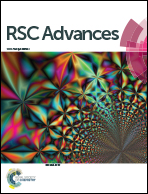Evaluating the merit of ALD coating as a barrier against hydrogen degradation in capacitor components
Abstract
The degradation of the properties of electronic materials due to exposure to hydrogen gas is a common problem in electro-ceramic device components. In this study, we explore atomic layer deposition (ALD) coatings as a potential barrier against hydrogen gas. Three ALD chemistries of ZnO, Al2O3, and HfO2 with different thicknesses were coated onto BaTiO3 capacitors, and their merit as hydrogen gas barriers at high temperatures was evaluated by I–V and impedance spectroscopy which could monitor the degradation of resistivity. These experimental investigations provide the temperature of merit (T0) and the proton (H-ion) diffusion coefficients of the ALD layers, which can be used to evaluate their barrier effectiveness. Transmission electron microscopy (TEM) analysis was applied to examine the ALD layers before and after the I–V tests and find out the physical dimensions, conformity, and structure (amorphous and crystalline) of the ALD layers. We determine that the failure of the barrier characteristics at elevated temperatures is due to crystallization. The diffusion coefficient associated with protons before and after crystallizations in ALD layers was determined. Within the chemistries investigated here, the most effective ALD layers are made of HfO2 with an amorphous structure.


 Please wait while we load your content...
Please wait while we load your content...